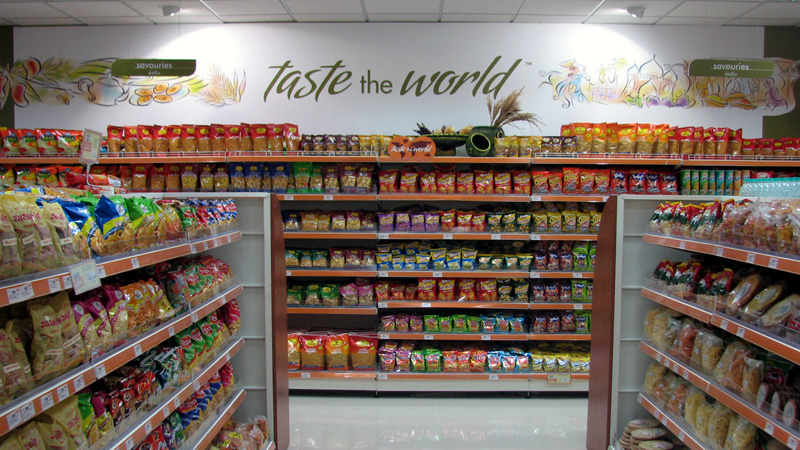FMCG firms faced subdued results in Q3FY24, influenced by sluggish rural demand and heightened competitive pressures, impacting overall volume expansion. In this context, let’s assess the long-term investment prospects of ITC and Hindustan Unilever (HUL).

FMCG companies experienced subdued performance in Q3FY24 due to slow rural demand and heightened competitive pressures, impacting overall volume growth. In this scenario, let’s compare ITC and Hindustan Unilever (HUL) to determine which stock presents more favorable long-term investment opportunities.
FMCG firms recorded subdued results in the December quarter (Q3FY24) owing to slow rural demand and heightened competitive pressures, impacting overall volume growth. However, there is optimism for demand recovery in the upcoming quarters, driven by easing inflation, heightened government spending, and increased remittances. Despite stable raw material prices enhancing gross margins, a temporary impact on EBITDA margins is expected due to heightened advertising spending, with anticipated long-term benefits in market share retention.
In this scenario, let’s assess the long-term investment prospects between ITC and Hindustan Unilever (HUL) to determine which stock holds better opportunities.
Stock Price Trend
Both ITC and HUL have demonstrated weaker performance compared to the benchmark in the current year. ITC has witnessed a decline of nearly 11 percent in the year-to-date (YTD) of 2023, while HUL has experienced a loss of 10 percent during this timeframe. In contrast, the Nifty FMCG has seen a decrease of 4.5 percent, while the overall Nifty has shown a positive movement, advancing over 2 percent in the same period.
Both ITC and HUL have not performed well in the first two months of 2024. ITC experienced a 6.5 percent decline in February, following a 4.4 percent loss in January. Similarly, HUL showed a negative trend with a 3.5 percent drop in February and a 7 percent fall in January.
Over the past year, ITC has seen a modest 7 percent increase, but HUL has faced a downturn with a 3.6 percent decline. In the same period, Nifty FMCG saw a robust 19 percent rise, and Nifty surged by over 27 percent.
Despite the overall market hitting new highs, ITC didn’t join the rally. Its record high of ₹499.70 was reached on July 24, 2023. Presently, trading at ₹412.45, the stock is more than 17 percent below its peak. However, it has rebounded by almost 12 percent from its low of ₹369.65 on March 17, 2023.
In contrast, HUL reached its highest point at ₹2769.65 on July 7, 2023. Presently, trading at ₹2,392, it’s nearly 14 percent below its peak but has only inched up by 2 percent from its low of ₹2346.75 on February 15, 2024.
Looking at the long term, specifically over three years, ITC has outperformed. With returns exceeding 97 percent, it has clearly surpassed HUL, which has seen a modest increase of just 10 percent during the same period.
Earnings
ITC
On a recent announcement, ITC revealed a 6 percent boost in its combined net profit, reaching ₹5,335 crore for the quarter ending in December, surpassing market expectations. This is a noteworthy increase from the ₹5,006 crore reported in the same period of the previous year. In comparison to the preceding September quarter, the net profit has surged by 13 percent from ₹4,927 crore. Simultaneously, the revenue from operations witnessed a 2 percent YoY increase, totaling ₹19,484 crore compared to ₹19,020 crore in the corresponding period last year. The EBITDA stood at ₹6,024 crore, showing a slight dip of 3.2 percent. The EBITDA margin recorded a YoY decline of 180 basis points, settling at 36.6 percent.
HUL
HUL recorded a standalone net profit of ₹2,519 crore in the third quarter of FY24, showcasing a minimal growth of 0.55 percent from ₹2,505 crore in the corresponding quarter of the previous fiscal year. However, on a sequential basis, HUL’s net profit for Q3 saw a decline of 7.28 percent from ₹2,717 crore. The company’s total revenue in Q3FY24 experienced a slight drop of 0.38 percent, amounting to ₹14,928 crore compared to ₹14,986 crore YoY. Operationally, EBITDA remained steady at ₹3,540 crore, and EBITDA margins improved by 10 basis points YoY, reaching 23.7 percent.

